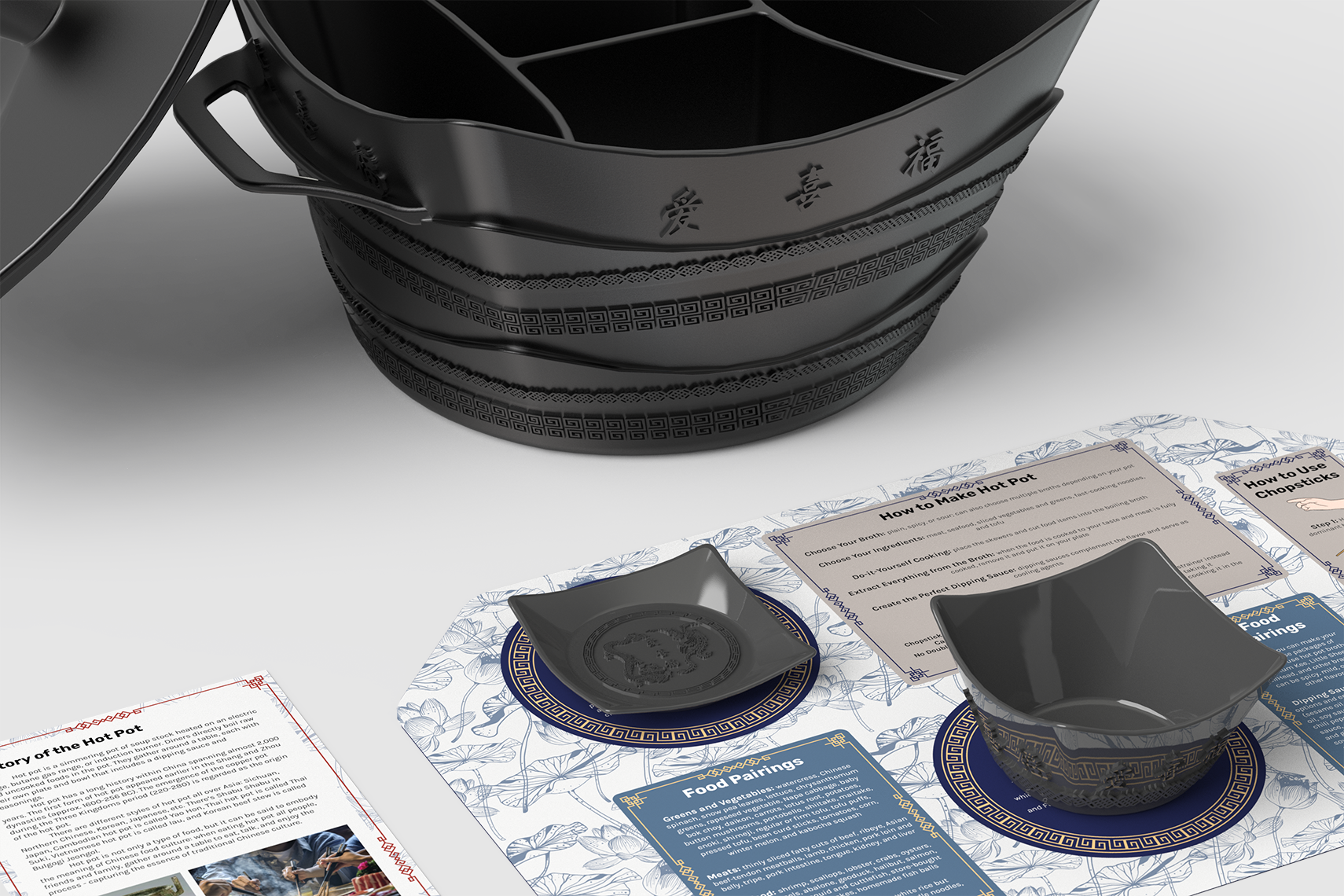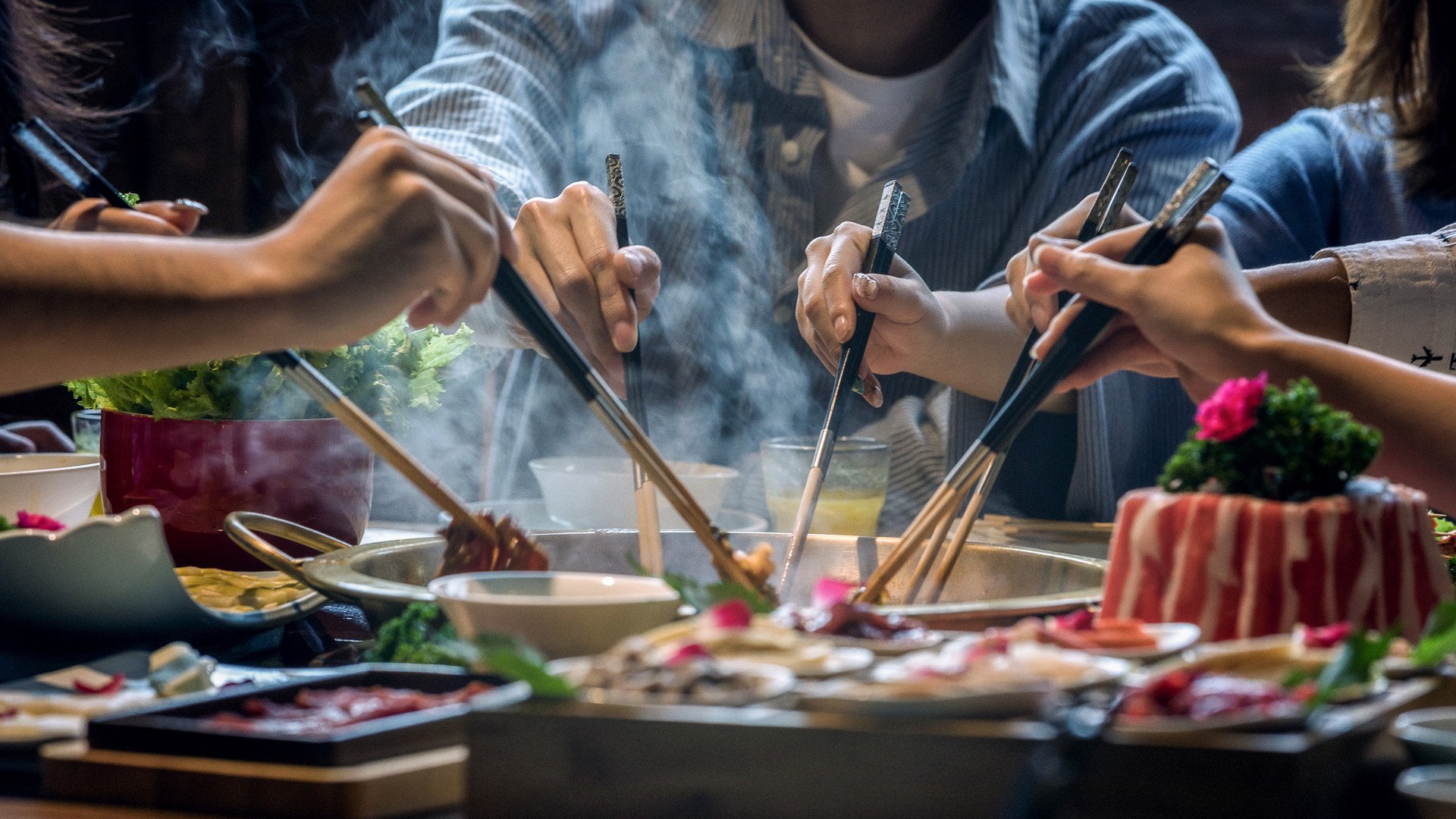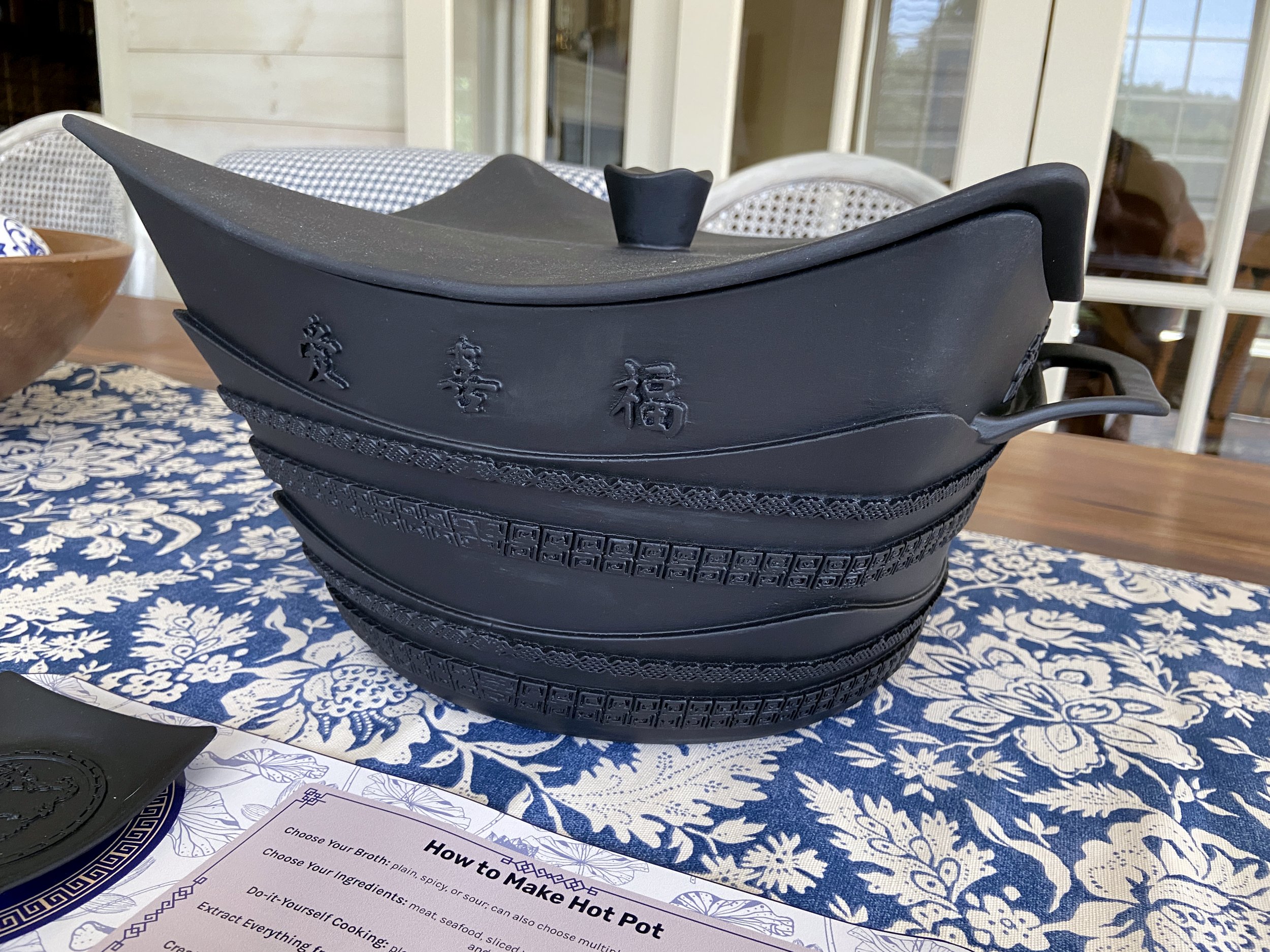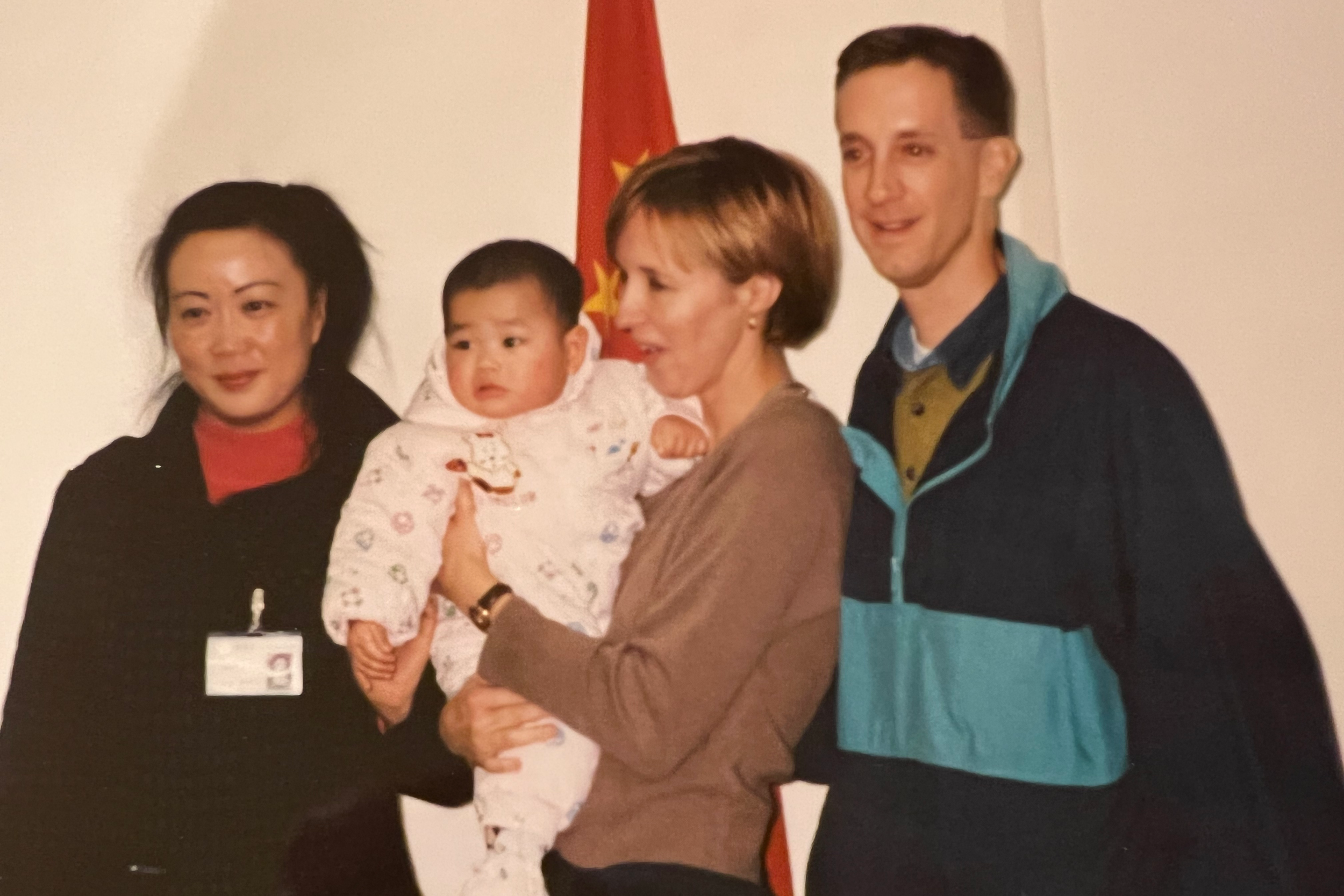
connection to heritage & culture
ORIGIN
Educational Hot Pot Experience
Design Brief
ORIGIN is a hot pot experience created to help Chinese adoptees establish or strengthen their connection to Chinese culture.
There’s a disconnect in how adopted Chinese people view themselves in a mostly white society. Many feel that they aren’t Chinese enough or white enough for American society. In many cases, Chinese adoptees don’t have much interaction with native Chinese people or Asian Americans so there’s also a lack of connection to Chinese culture.
I, myself, am a Chinese adoptee who has never really had a connection to Chinese culture or my heritage.
I created ORIGIN to help find and strengthen the connection to Chinese culture for myself and my fellow Chinese adoptees.
China’s One-Child Rule
In 1979, China announced a regulation stating that each family was only allowed one child. This ruling resulted in a wave of children being abandoned whether willingly or not.
In response to the one-child rule, many Americans adopted more than 78,000 children from 1999 to 2016. Most of these children were girls due to China’s preference for boys and their value to the family compared to girls.
The majority of parents that adopted these babies were white, older, well-educated, and middle class. This meant that many of the children grew up in mainly white families without much contact with people who looked like them.
"It is one thing to dress children up in cute Chinese dresses, but the children need real contact with Asian-Americans, not just waiters in restaurants on Chinese New Year. And they need real validation about the racial issues they experience."
— Jane Brown, a social worker and adoptive parent who conducts workshops for adopted children and their families
“Cultural Racial limbo”
Adopted Chinese children tend to grow up in mainly white communities in white families. They don’t have much interaction with people who look like them or understand their experiences as people of color and adopted individuals.
“I was adopted into a white family. I don’t always connect with Asian people,”
says a 15-year-old Chinese adoptee Sasha (pseudonym name to protect her privacy). Although her white family doesn’t shy away from the fact that she’s an adopted Chinese person and openly accepts her heritage, she has difficulty feeling completely Asian.
Dr. Amanda Baden, a psychologist who specializes in issues with international adoption and racial and cultural identity, has a term that sums up the feelings felt by Sasha in a more simplified manner called “cultural racial limbo.” Dr. Baden says that
“she feels white and she is Chinese, but she doesn’t feel Chinese.”
This ambiguous feeling is felt by most Chinese adoptees and adopted people of color who grow up not seeing people who look like them. These are perfectly valid and normal feelings to have when faced with the realization that you are different, even from your own family.
Interviews with Fellow Chinese Adoptees
I conducted initial interviews with several fellow Chinese adoptees. I asked them questions concerning their connection to Chinese culture and their heritage, their relationship with their families and whether they grew up in white communities, their contact with Asians, and their process of connecting to their heritage.
I found that many of us have similar experiences concerning how we grew up and how little of a connection we all have with our Chinese heritage.
Let Me Tell You My Story
When I was not even a year old, I was left on the streets on the outskirts of Guangzhou. A homeless man nearby saw me, picked me up, and took me to the orphanage where I stayed until my adoptive family got me. I was 10 months old when I was adopted by my family. My parents traveled from the United States all the way to Guangzhou and picked me up from the orphanage. They took me back to the States with them and I gained two parents and two brothers. I love my family and I’m so grateful that they decided to adopt me. Contrary to what some Chinese adoptees feel, I never had much desire to look for my biological parents. The only thing that I felt was missing was my connection to my Chinese heritage.
This is a picture of my parents picking me from the orphanage in China. The two women with them are the directors of the orphanage.
Here’s a photo of my family with my parents, my brothers, and their wife and fiance.
I’ve never connected much with my Chinese heritage
I grew up in a mainly white community with only two other adopted Chinese girls. I was friends with one of them but we never connected much on the fact that we were Chinese and adopted.
I hardly ever saw anyone that looked like me. My parents made sure that I knew where I was from and tried to keep me connected to my culture but it was always hard for me to grasp. Not having any contact with Asian-Americans hindered my concept of being Asian and Chinese.
I’ve always felt that I was not quite American because I’m not white and not quite Chinese because I never really knew what it meant to be Chinese. Being in college, I’ve been able to meet a lot of Asians and Chinese people who have helped me to understand what it means to be Asian and Chinese.
Food connects us to our culture
One of the big ways that people connect to their culture is through food. The food itself, the way it’s prepared, how we eat it, and who we eat it with telling a rich story. We use food to communicate to each other our culture, habits, rituals, and traditions.
In Chinese culture, food plays a big role. Eating is done family style with shared dishes. A communal meal is shared with friends and family and becomes a big social event.
People eat food more so for texture than for taste in China. Jellyfish or sliced pig ears don’t have any taste but have a texture that the Chinese like.
Food can also be used as a status symbol. You are well off if you can afford to eat seafood, abalone, shark’s fin, bird’s nest soup, or serve someone the finest yellow rice wine. Certain foods represent your sophistication and status.
“Food is particularly important when you become part of a diaspora, separated from your mother culture.”
— Jennifer Berg, director of graduate food studies at New York University

So what is hot pot?
It’s a simmering pot of soup stock heated on a range or burner.
Diners directly boil raw and uncooked foods in the pot. They gather around a table, each with their own plate and bowl that includes a dipping sauce and seasonings.
Hot pot has a long history that spans almost 2,000 years. It first appeared in China during the Shang and Zhou dynasties (approx. 1600 - 256 BC). The copper pot during the Three Kingdoms period (220 - 280) is considered the origin of the hot pot.
China isn’t the only country to have hot pot. Different styles exist all over Asia: Sichuan, Northern Chinese, Korean, Japanese, and more. Japan has Shabu Shabu, Cambodia has Yao Hon, Thailand has Thai Suki, Vietnam has Iau, and Korea has Bulgogi Jeongol.
Hot pot is said to encompass the true meaning of Chinese food culture. People, friends, and family all gather around a table and eat, converse, and enjoy each other’s company while delighting in the process — the essence of traditional Chinese culture.
Goals & Objectives
Create a hot pot experience that helps the user to establish or strengthen their connection to Chinese culture.
Design a hot pot experience that brings people together and creates a sense of community.
Include educational materials to teach about Chinese culture and traditions.
Validation
For my validation process, I conducted interviews with the fellow Chinese adoptees that I interviewed during my research phase. I compiled a presentation detailing what my project was, why I was doing it, who I was doing it for, and including the progress, I had made so far as well as my plans for the future of the project. Most of the interviews were conducted over video call but some were in person. I included quarter-scale 3D printed models of my concepts when I conducted the in-person interviews so that my interviewees could pick up and handle them.
The biggest takeaway that I got from the validation interviews was that people wanted the whole experience. They wanted the hot pot set but also the history and symbolism. They also wanted to know more about the Chinese adoptee experience and links to other ways to connect.

The Hot Pot Experience contains a pot with a lid and built-in dividers, a plate, a bowl, a placemat, and an informational card.
The form of the pot was inspired by Chinese architecture, especially the distinctive upturned corners of the ceramic-tiled roof of the timber buildings.
The Chinese characters embossed on the pot are Ài爱 which means love, Xi 喜 which means happiness, and Fù 福 which means blessings and good luck.
The pot has dividers built into it so that users can have multiple kinds of broth simmering simultaneously.
The lid of the pot mimics the upturned corners similar to the corners of the pot.
The pot and lid would be investment cast out of black carbon steel.
The forms of the ceramic plate and bowl are both inspired by the shape of the pot. On the surface of the plate are a dragon and phoenix. The dragon is one of the most powerful symbols in Chinese culture and represents the Emperor. It’s good-natured and the most auspicious of all. The phoenix is a mythical bird described as the “king of all birds” and represents the Empress. Together they create balance which will bring great happiness. The bowl has the same Chinese characters as the pot.
The placemat and the informational cards contain information about hot pot and the inspirations behind the products
The placemat has information on it that tells the user the inspirations behind the designs of the bowl and the plate. It also tells the user how to make hot pot, what ingredients are suggested, and how to use chopsticks.
The informational card contains the history of hot pot and its significance to Chinese culture. It details how food relates to cultures and how people use food to connect to cultures. The card tells the history of Chinese adoptees and a little bit about our experiences. It finishes with my own story of how I was adopted and my own experiences of being a Chinese adoptee.
The final prototype
For the final prototype, the pot, lid, bowl, and plate were all 3D printed out of white PLA. I superglued the pieces together and sanded and smoothed everything out with Bondo. I applied primer and sanded. And to finish it all off, spray painted it with a matte black.
The placemat and the informational card were both printed on thicker glossy paper and glued together.









My takeaways
I learned and discovered a lot when creating this experience. I had never tried to get in touch with my Chinese heritage and it was a great experience discovering more about the culture that I come from.
It was interesting learning about hot pot and its history. I got to experience eating it for the first time with friends while working on this project and it let me feel a little bit closer to what it means to be Chinese. It was also interesting learning about Chinese architecture and why it is the way it is. I liked learning about all of the symbolism in Chinese culture and how various things and words became significant because of how they sounded.
The most impactful part of this project would have to be learning about how similar every Chinese adoptee’s experiences were. We can all relate to one another and we create our own community. It felt very validating and relieving to know that I wasn’t the only one who had this experience and felt a certain way.



















